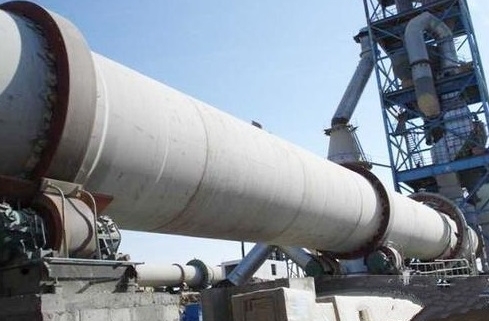When hazardous waste is incinerated in a rotary kiln incinerator, if the operation is improper in actual operation, it is easy to cause the problem of ring formation in the kiln. When the ring formation is serious, it will cause the gravity load in the kiln to increase, the material will not run smoothly, it will cause the refractory material to be cracked and damaged, and the incineration system is forced to stop. Therefore, it is necessary to prevent from the source of operation.
1. Choose the appropriate operating mode
According to the conditions of material ash content and calorific value, carry out material compatibility and select the appropriate operation mode, so that the rotary kiln can work in dry slag or molten slag mode as much as possible, and try to avoid the material running in a semi-melted state;
2. Change the feeding method and stabilize the air distribution
According to the characteristics of the materials, do a good job of classification and compatibility of materials, try to use continuous feeding equipment such as spiral or SMP (crushing-mixing-pumping system) to feed solid waste, and strengthen the air distribution of the rotary kiln to make the rotary kiln more efficient. The operating temperature is in a relatively stable state;
3. Strengthen the compatibility of waste
Try to control the amount of materials with high alkali metal content or other low melting point ash waste into the furnace. If it is necessary to deal with high-alkali metal wastes, some CaO can be appropriately matched, or clays containing high SiO2 or Al2O3 can be compatible. At the same time, according to the calorific value of the waste, a reasonable compatibility is made to ensure the stability of the calorific value of the waste.
The safe and stable operation of the incineration system is the basis for the safe incineration and disposal of hazardous wastes, and the internal ringing of the rotary kiln is one of the important factors affecting the stable operation of the device. Due to the wide variety of domestic hazardous wastes, some wastes do not have relevant industrial analysis and element analysis data, so there may still be looping in actual operation. If the looping is serious, it may also cause the lining to fall off and collapse, so it takes at least 2 weeks to stop and clean. Therefore, if the loop is cleaned online under the premise of ensuring safety, it has more practical significance. According to the author’s experience, the following two methods are recommended for cleaning:
1. Self-melting measures
According to the ash melting point data of hazardous waste rotary kiln slag, the melting point of molten slag is only about 100°C higher than the stable operating temperature of the rotary kiln. According to the design parameters, the refractory temperature of the lining material of the general rotary kiln is 1,350℃. Therefore, it can be considered that during the operation of the rotary kiln, by adjusting the combustion conditions, the operating temperature of the rotary kiln can be appropriately increased to about 1,200℃, so as not to harm the rotary kiln. Under the premise of the lining material, the inner ring of the rotary kiln is melted. Taking the molten state of operation mode can effectively solve the problem of ring formation inside the rotary kiln. This method of clearing loops has been verified in many domestic hazardous waste disposal centers;
2. High pressure water gun
The high-pressure water gun injects a 30-50MPa high-pressure water column into the crust material with a temperature of 850℃-1,050℃. In the high-temperature material, the water suddenly vaporizes and expands, causing the crust to burst, and the hit material is shaken and collapsed. , The local temperature of the adjacent part of the material drops rapidly and becomes brittle and hard. The penetration depth of the high-pressure water jet is related to the thickness of the crust, and the purpose is to make the crust material burst and collapse, while the refractory material is not affected. The angle at which the water jet enters should only make the material soft and not overwhelmed by a large area, otherwise it may cause injury to equipment or personnel. This method requires high operating angle and space, and is suitable for cleaning the loops at the tail of the rotary kiln. However, if the operation is improper, it may also damage the lining of the rotary kiln.
In summary:
1. The operating temperature of the rotary kiln has a great influence on the ring formation of the rotary kiln. Therefore, it is recommended that the rotary kiln be operated in dry slag mode or molten slag mode, and it is not recommended to operate in a semi-molten slag state;
2. The feeding method and air distribution also have a great influence on the operation stability. The continuous feeding method is better than the traditional intermittent feeding. At the same time, optimize the air distribution control program, which is more conducive to the stability of operation and reduces the formation of loops;
3. The composition of ash and slag (especially the content of low melting point salt) also has a certain influence on the ring formation and ring formation temperature, and it needs to go through strict compatibility to minimize the amount or proportion of low melting point salt into the furnace;
4. If loops are produced in actual production, they can be cleaned by self-melting or high-pressure water gun.



